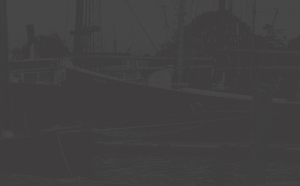Restoration of a Large Sailing Model, 2
SAILS, SPARS AND RIGGING
I will discuss my findings in the order above and try to address them from fore to aft, top to bottom and port to starboard, as needed.
SAILS
When The client and I discussed how the repairs would be carried out, he mentioned that he might like to have a suit of sails made, while I was rebuilding everything else. I resisted this idea initially because I could see no evidence the model ever carried sail. However, when I got the model into the studio, and looked it over, it quickly became apparent that this was, at one time, a sailing model. When I informed The client of the discovery, he asked that I put sails on the model. And so the model has a new suit of “canvas”.
HEAD RIGGING
THE BOW SPRIT AND JIB BOOM both appear to be original to the model and are in good condition. There is no obvious evidence of a dolphin striker, although given the number of head rigging attachment points in the bows of the model it would seem logical that there would have been one.
Figure 4 This shows the 2 misplaced spars on the jib boom.
On the top side of the jib boom, there is a wire traveler about 2-1/2” long and ¼” tall. Attached to this traveler, there were two spars: one looked original to the model, the other did not. I surmised that these were used as jib boom whiskers or spreaders for the head guys, port and starboard. But, they could not have served in that function while being attached to the wire traveler. In order for these two spars to act in that capacity, they would need to be in a fixed position, not allowed to move. After consulting sail plans for similar vessels from the same era, I found the wire traveler was a snotter used to trim the forestay sail (also called a jumbo on fishing schooners). The forestay sail would have been laced on to a club boom. The forward end of the club boom would be fitted with a goose neck and that gooseneck would have slid forward or aft on the snotter, as needs dictated. Also, upon closer examination of the two spars, I found the original spar had clearly been cut down and its aft end altered in shape. The non original piece, which I am assuming was made by the same person who carried out the other repairs, was similar in length, only to the original.
Figure 5 This image shows how the snotter and club boom should be rigged.




Leave a Reply